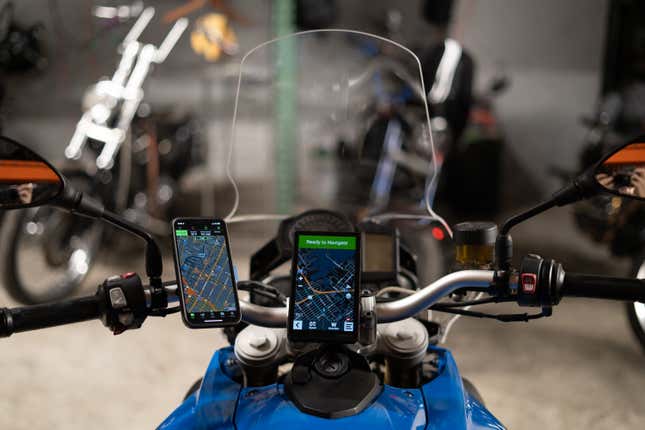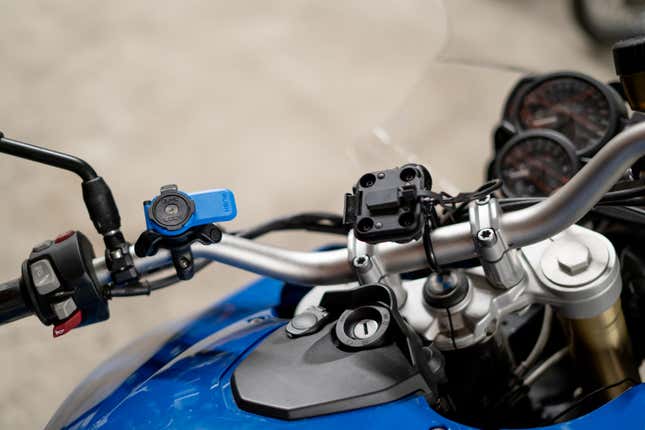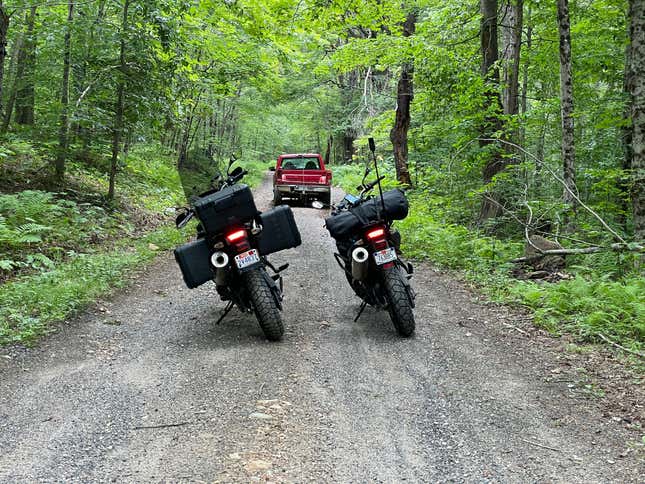A few weeks ago, I took a motorcycle ride with a friend up Massachusetts’ Trans-Mass Trail. We had a pre-planned route, GPS tracks laid out ahead of time by riders far older and wiser than we, downloaded to our phones to guide us. Two riders meant redundancy, two phones meant a better chance of coverage — what could go wrong?
Just in case, however, I reached out to Garmin about testing the new Zumo XT2 GPS unit on the trail. I figured it couldn’t hurt to have a backup that didn’t rely on cell signal to load maps, in the off chance neither of us had coverage. I’m glad I did — without it, I’d likely still be stuck in the woods of western Mass, eating berries and tires for sustenance.
Full Disclosure: Garmin sent me a Zumo XT2 navigation unit for use on my bike through the Trans-Mass Trail, including wiring and a mounting setup.

What Is The Garmin Zumo XT2?
The Zumo line is Garmin’s top-tier offering for motorcycles — the only offering the company will recommend for roadgoing bikes, in fact, though off-roaders get a few more choices to play with. This XT2 is the top of the top, with a bigger 6 inch screen than the base 5.5 inch XT. It also gets some other options for routing and friend-tracking that the base model lacks, making it the most feature-dense option in the lineup.
But, in a more broad view, the Garmin Zumo XT2 is a GPS unit. It shows you where you are, on a map, and how to get to wherever you’re going — the same thing that any number of mobile apps can do. Why would you spend 600 of your hard-earned dollars on another device that you can lose, break, or forget to charge, when a free app can do the same thing?

Why Do You Need A Dedicated GPS In The Year Of Our Lord 2023?
The fatal flaw of cell phones, for navigation, lies right in the name: Cellular devices require cell signal to work. Stray too far from your nearest magic tree, and your thousand-dollar device suddenly becomes about as functional as a brick. The official Tetris app doesn’t even work without an internet connection, navigation is a definite no-go.
By contrast, dedicated GPS devices have a dedicated GPS connection. They rely on satellites, which have a broader coverage area than your average 5G tower. Cell phones may be able to store small offline areas, but a good GPS works nearly anywhere — always, and forever.
This may sound like a fringe benefit — how often are you entirely devoid of cell signal, really? — but it becomes all too real out on the trail. In my Trans-Mass trip, I ran into multiple trails that had been entirely closed due to rainfall in the area — and were far from any cell signal. Backtracing my steps would have been difficult, especially as the light began to fade and the closed trails got more dense, but the Garmin’s mapping made rerouting easy. Often, there were other trails that could still get me where I needed to go, without forcing me all the way back to a main road.

What About On-Road Use?
The Garmin’s value proposition is, to be sure, shakier for pure road use. It’ll guide you through roads as well as any cell phone, but when you have cell signal it’s often easier to just keep using the same device. Sure, a separate screen means less tabbing back to your map when someone calls you, but that’s a small benefit. So too are the TripAdvisor recommendations when you stop — nice, sure, but not a dealmaker.
If you’ve got cash to spare, and the Garmin’s on-road niceties spark your fancy, I won’t stop you from picking one up. It’s certainly nice to have, day in and day out, but the system truly shines when it’s taken out into more remote areas. If you’re a motorcyclist who frequents those, the Garmin is worth the price — particularly when your alternative is living the rest of your life in the Massachusetts backwoods.